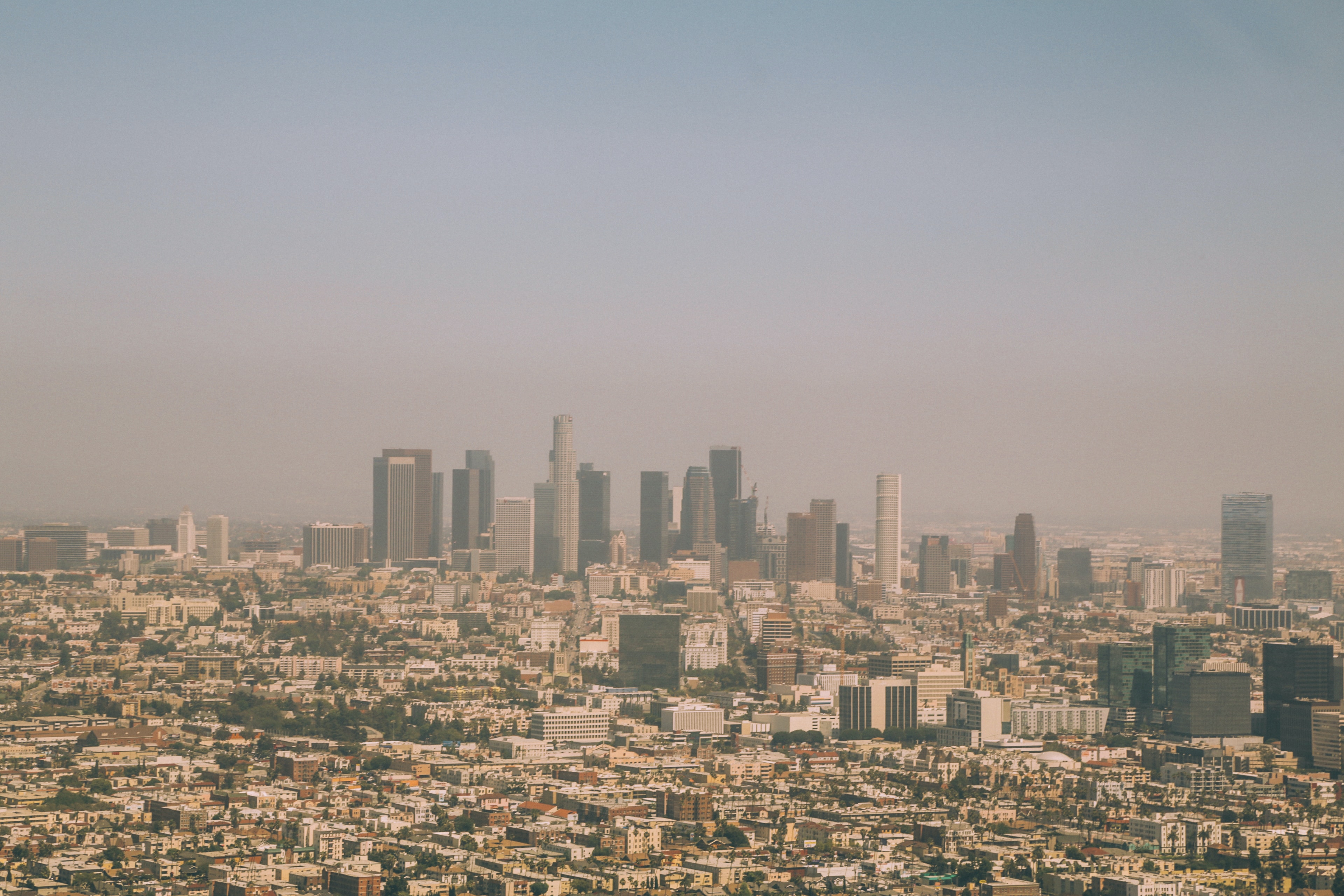
Beyond vehicle collision related impacts, Californian residents are also subject to additional health impacts from transportation, including traffic-related air, noise, and ground pollution.
Air Pollution
Cars, trucks, and other vehicles account for over 35% of California’s total climate-changing emissions, higher than any other emission sector , contributing through both tailpipe and non-tailpipe abrasive vehicular wear emissions.These air pollutants include:
• Nitrogen oxides: Road transportation accounts for 34% of nitrogen oxides (NOx) emitted statewide. NOx is a precursor to ozone, a toxic gas we recognize as ‘smog’, that is prevalent throughout California and harms respiratory health.
• Particulate Matter: Road transportation accounts for about 8% of fine particulate matter (PM2.5) emissions statewide. PM2.5 is a complex mix of chemicals that can be breathed deeply into the lungs, and has been associated with respiratory disease, heart issues, cancer, and premature birth. It is estimated that PM 2.5 exposure contributes to 5,400 premature deaths due to cardiopulmonary causes each year in California.
• Carbon Monoxide: Road transportation accounts for nearly 30% of carbon monoxide (CO) emissions statewide, and it can account for over 90% of CO emissions in urban areas. CO can reduce the body’s ability to transport oxygen and interfere with healthy organ functions and increase risks of poor birth outcomes.
The distribution of this pollution – and resulting health impacts – is not equitable across California’s communities. On average, Black, Latino, and Asian Californians are exposed to more PM2.5 pollution from cars, trucks, and buses than white Californians. These groups are exposed to PM2.5 pollution 43, 39, and 21 percent higher, respectively, than white Californians . On-road emissions are a large driver of overall racial disparities in PM2.5 exposure, and racial disparities in transportation pollutants persist regardless of income.
Furthermore, exposure to PM2.5 from cars, trucks, and buses is not equally distributed across the state. People living in Los Angeles County are exposed to 60 percent more vehicle pollution than the state average and 250 percent more than the San Francisco Bay Area. Additionally, Californians living in households without a personal vehicle are also exposed to much higher levels of vehicle pollution than other households because they tend to live in urban areas surrounded by vehicle traffic.
Noise Pollution
The main contributors to community noise are transportation-related, including road traffic, trains, and airports. Living with traffic noise has been associated with annoyance, stress, and sleep disturbances, as well as linked to many negative long-term health impacts. European studies have shown that constant traffic noise results in an 8% risk of cardiovascular disease and 6% risk of diabetes, as well as linked to reduced life expectancy. The European Environment Agency estimated in 2020 that noise exposure causes about 12,000 premature deaths and 48,000 cases of heart disease each year in Western Europe .Traffic noise does not affect everyone equally. Across the United States, daytime and nighttime noise levels were found to be higher in low-income communities and those with a large proportion of nonwhite residents. These minority-race communities and lower-income communities often live in areas near highways and airports in poorly insulated homes.
Federal code provides guidance for highway traffic noise study and mitigation to protect public health and livability, whilst California has passed two laws in 2022 aimed at quieting the environment from traffic noise. SB1097 directs California Highway Patrol (CHP) to begin testing noise-detecting cameras that could eventually be used to issue automatic tickets for cars that make noise above a certain level. These cameras already in use across several cities in the US and Europe. CHP will need to make its recommendations by 2025. AB2496, which takes effect in 2027, will require owners of vehicles that have been ticketed for noise to resolve the issue before they can be re-registered. Currently, drivers can pay a fine and keep their illegally modified cars and continue to subject communities to their noise.
